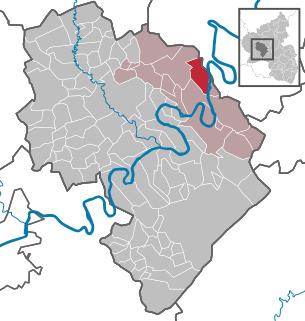
Franciszek Ksawery Lampi, also known as Franz Xaver Lampi, was a Polish Romantic painter born in Austria of ethnic Italian background. He was associated with the aristocratic circle of the late Stanisław II Augustus, the last Polish king before the foreign partitions of Poland. Lampi settled in Warsaw around 1815 at the age of 33, and established himself as the leading landscape and portrait artist in Congress Poland soon after Napoleon's defeat in Russia.
Events from the year 1641 in art.
Jan Joost van Cossiau (c.1660–1732) was a Flemish landscape painter and engraver who was born near Breda. He spent most of his career in Frankfurt am Main. His landscapes usually include people, and also often buildings and cattle. They are in the “Italian style” and generally resemble those of Gaspard Dughet (1613–1675). Cossiau worked for Lothar Franz von Schönborn at his electoral court, as well as at his Schloss Weißenstein (castle). He was also director of the electoral gallery at Pommersfelden, where he established the final directory of paintings, after the first survey by Johann Rudolph Bys. In order to extend his gallery, Lothar Franz sent his two gallery directors often to the Netherlands and Italy. Jan Joost van Cossiau died in Mainz in 1732.

Johann Balthasar Bullinger was a Swiss landscape painter.
Franz Joseph Zoll was born at Möhringen an der Donau, in Baden, in 1772, and was first instructed by his father, a sculptor and painter. In his fourteenth year he went to Trostenberg in Bavaria, to an uncle who was a fresco painter, and then spent two years at Munich, studying under Johann Dorner and Joseph Hauber at the Academy. He visited Paris, Vienna, and Rome. In 1821 he became professor of design at Freiburg University, and in 1823 director of the Mannheim Gallery. He died in 1833. A Hercules and Hebe by him is in the Karlsruhe Gallery, and a Resurrection in the church of his birthplace. His early works were chiefly portraits.
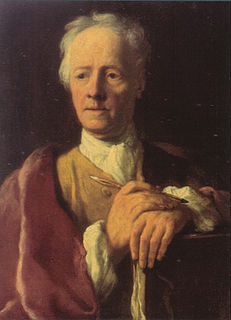
Franz Joachim Beich was born at Ravensburg, on October 15, 1666. He was the son of Daniel Beich, a painter of little celebrity, from whom he received his instruction in the art.
Peter von Bemmel was a German landscape artist.

Johann Friedrich Weitsch, called "Pacha Weitsch", from his fancy for Oriental costumes, was born at Hessendamm, near Wolfenbüttel, Niedersachsen, Germany, in 1723. He was the son of a house-tiler, but from his youth had a bent towards art. His having become a sergeant in the army, his colonel once called upon him to copy a few landscapes, which, though his first attempts at painting, were so successful that he thenceforth devoted himself exclusively to art. He copied pictures in the gallery at Salzdahlen, and was then appointed to a post in the porcelain factory at Furstenberg. He pursued oil painting at the same time, and studied from nature and the old Dutch masters. His works were at first small landscapes and views of towns, but later on he took to woody scenes, and especially oak forests with cattle. In 1788 he became inspector of the Salzdahlen gallery, and died in that place in 1803. Four landscapes by him are in the gallery at Brunswick.

Johann Michael Bretschneider (1680–1729) was a German painter.

Franz Ludwig Catel was a German painter. He spent most of his career in Rome.

Ferdinand Kobell was a German painter and engraver.
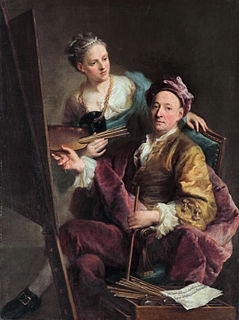
Georg Desmarées or Des Marées, was a Swedish-German portrait painter.
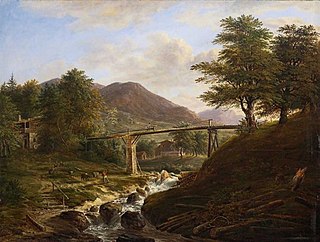
Johann Jakob Dorner the Younger, a Bavarian landscape painter, the son of Johann Jakob Dorner the Elder, was born at Munich in 1775. He was instructed in art by his father and by Mannlich, but he afterwards studied the works of Claude Lorrain and Karel Du Jardin. He travelled by himself through the picturesque regions of Bavaria, Switzerland, and France. His works are distinguished for spirited composition and taste in their execution. In 1803 he became Restorer, and in 1808 Inspector of the Royal Gallery at Munich, and was subsequently elected a member of the Academies of Hanau, Vienna, Berlin, and Munich. He died at Munich in 1852.

Heinrich Dreber, known as Franz-Dreber, was a German landscape painter.

Johann Christian Eberlein (1770–1815), a German painter, was born at Göttingen about 1770, and died there in 1815. An Italian Landscape by him is in the Modern Gallery at Munich.
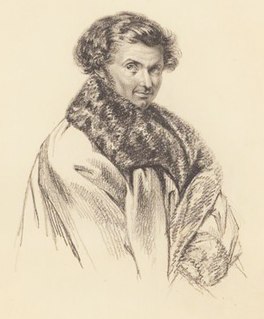
Johann Christian Michel Ezdorf or Etzdorf (1801–1851), a German landscape painter, was born at Pösneck, in the duchy of Saxe-Meiningen. He studied landscape painting in Munich and its environs, and displayed an especial talent in representing gloomy forests, taking as his models the works of Ruisdael and Van Everdingen. He visited Norway, the North Cape, Sweden, Iceland, and England. One of his best paintings is in the Modern Gallery at Munich; it represents a Forge by the side of a Waterfall. He died at Munich in 1851.

Johann Joachim Faber was a landscape painter who was born in Hamburg. He worked originally at historical subjects, and painted the altar-piece, Suffer Little Children to come unto Me, for St. Catharine's Church at Hamburg. On his journey to Italy in company with J. A. Koch and Reinhardt, he was induced to adopt landscape painting, in which line he is best known. The Berlin Gallery contains a View of the Capuchin Monastery, near Naples, by him (1830). He died in Hamburg in 1846.
Johann Georg Fischer, an historical painter, was born at Augsburg in 1580. He travelled in Italy, but became an imitator of Albrecht Dürer. He died at Munich in 1643. The following are by him:
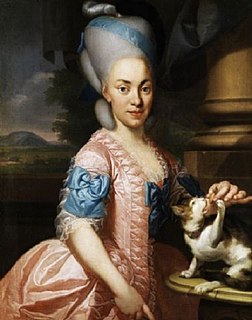
Johann Eberhard Ihle was a German painter.
The public domain consists of all the creative works to which no exclusive intellectual property rights apply. Those rights may have expired, been forfeited, expressly waived, or may be inapplicable.

Michael Bryan was an English art historian, art dealer and connoisseur. He was involved in the purchase and resale of the great French Orleans Collection of art, selling it on to a British syndicate, and owned a fashionable art gallery in Savile Row, London. His book, Biographical and Critical Dictionary of Painters and Engravers, first published in 1813-16, was a standard reference work throughout the 19th century, and was last republished in 1920; however it is now badly outdated.


